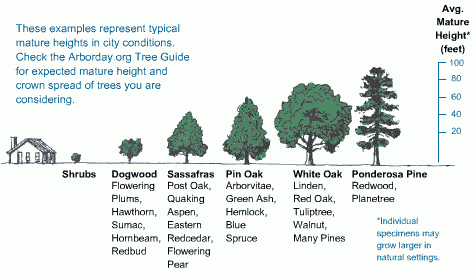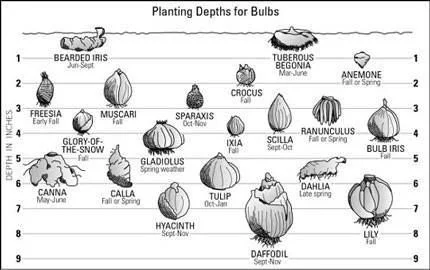Planting A Tree
There are many things to consider when planting new trees. Average trees may live anywhere from 30-100’s of years old. How long a tree will live also depends highly on how well the tree was planted, the planting location, and the care provided during planting, and the follow-up care after planting
Planting a new tree
https://www.treesaregood.org/portals/0/docs/treecare/New_TreePlanting.pdf
Avoiding Tree and utility conflicts
https://www.treesaregood.org/portals/0/docs/treecare/Avoiding_Conflicts.pdf
Proper Mulching Techniques
https://www.treesaregood.org/portals/0/docs/treecare/ProperMulching.pdf
Basic Tree Spacing
Arbor Day Foundation- http://www.arborday.org/trees/righttreeandplace/size.cfm
Planting Shrubs
When considering to plant shrubs, the process is quite similar to planting trees. How long a shrub will live also depends highly on how well the shrub was planted, the planting location, and the care provided during planting, and the follow-up care after planting. A shrubs function can be widely used for many different purposes: accent, specimen, hedge, barrier, border, edging, foundation, mass, screen, windbreak, or groundcover. Follow these steps to help determine where to start your landscape project.
Determine the type of tree(s) or shrub(s) that best suit your needs.
Decide how high you want your screen, or locate your main viewpoint corridor.
Decide how much width you have available.
Select a plant(s) that meet your needs.
Rows, Spacing, and Layout. Plant layout and spacing will depend on the type of shrub(s) or tree(s) you are planting and how close you want them at maturity. Some prefer a clean cut uniform look, where others prefer a natural flowing look.
Once layout is determined, your ready to plant your tree(s) or shrub(s)!
Planting Bulbs
A bulb is any plant that uses an underground storage unit to carry it through its resting period and help it get to the next season. Bulbs can be broke down into various categories.
Know before planting
Temperature
Check what flowers will do well in your hardiness zone and will thrive.
Season
Not all bulbs should be planted in spring, so make sure to determine the bulbs you’ve chose to plant are being installed in at the correct time of year.
Depth of Planting
The height of the plant, size of the bulb and moisture level of the soil all affect the ideal planting conditions.
Watering
Feel the soil around your plants every other day during the first growing season. Just-planted roots will be able to absorb soil moisture from only a small area until they begin to grow. Different types of plants use water at different rates. For example, perennials need watering more often than trees. Water your plants only if the soil feels dry. Allowing your soil to dry a little between watering will allow oxygen back into the soil.
Place the garden hose at the base of the plant or 1-3’ from the trunk of a tree.
Turn water on to a slow trickle.
Allow water to soak into the soil for a good 10-20 minutes depending on size of tree of shrub.
Move the hose around the plant to ensure uniform watering.
Water new plants once a week. Over watering can lead to stress or plant death.




